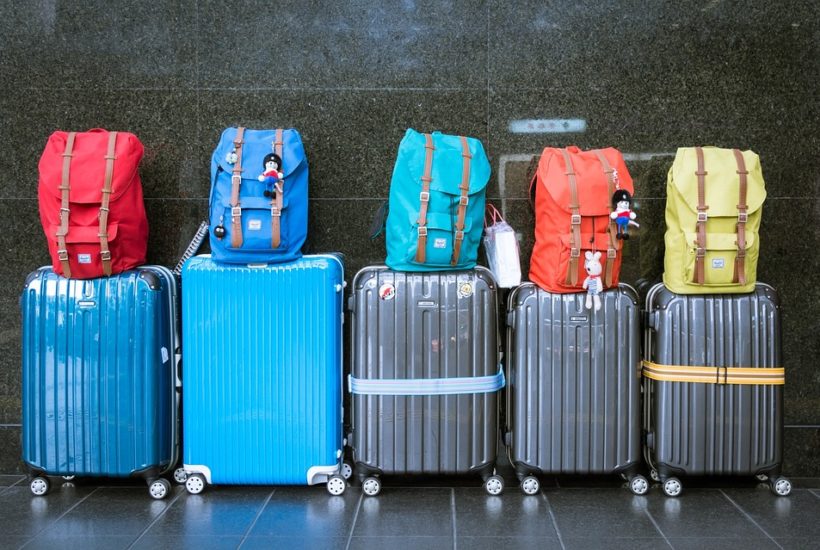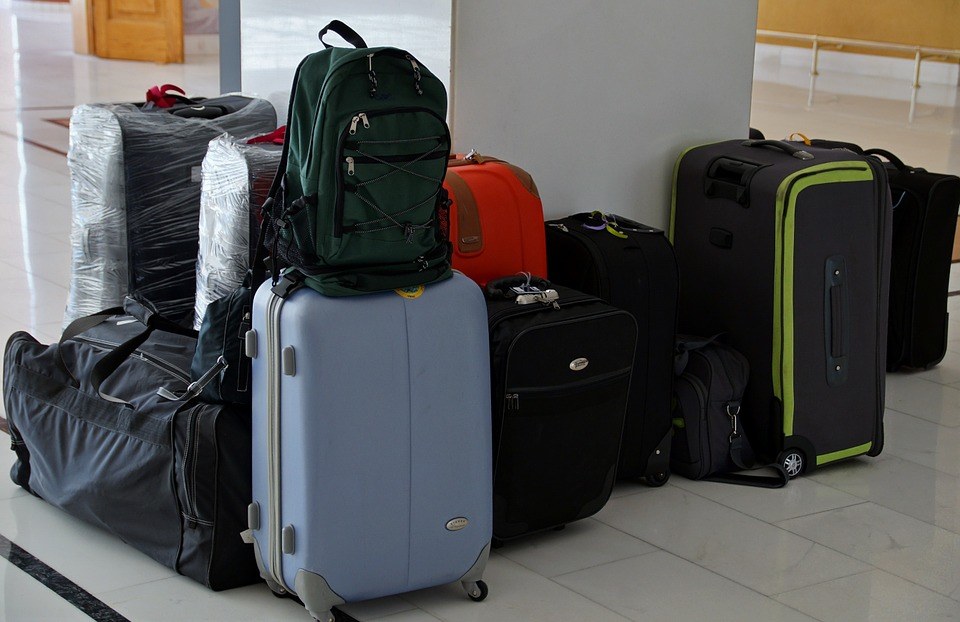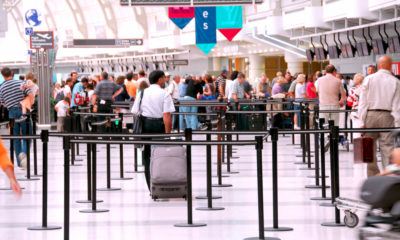Business
Ditch your luggage! Why baggage is obsolete
As airlines continue to rake in huge profits in luggage rates, it is about time to think about how you can minimize extra expenses when you travel. Innovation has made it possible to create compact baggage, as well as “wearable” luggage to avoid having luggage check-ins. In this post, we talk about some ways you can ditch the traditional luggage and avoid bringing extra suitcase when you travel.

It’s time to downsize your luggage.
The latest travel trend is ditching your regulation-size rollaboard for a smaller, more compact carry-on or even “wearable” luggage. These devices help you to avoid all the obstacles, restrictions and fees that airlines and the Transportation Security Administration (TSA) throw in your path.
Last year, airlines collected a cool $4.8 billion in baggage fees, up about 6% from 2017. They also continue to lose checked luggage, although their numbers are slowly improving.
And no one likes to rifle through your luggage more than the TSA, with its odd liquid restrictions and a long list of banned items.
Who wants to mess with all that? Enter the luggage-free movement.
One method involves passengers sending large bags – the kind you’d typically check – ahead to their destinations through a delivery service such as FedEx or UPS a few days before departure or even overnight. They then downsize their carry-on items to a small personal overnight bag.
In extreme cases, usually involving a “low-cost” carrier that charges for carry-on bags, passengers stuff their pockets with a change of clothes, medications and essential electronics. Look, Ma, no bag!
Checking luggage isn’t your only option anymore
All of which may make you wonder: Is luggage as we know it becoming obsolete?
It is for Nancy Aronson, a retired legislative worker from Washington.
“We mail a box with hiking shoes, and anything else we can cram into one large Priority Mail box and send it to our family when we visit them in Hawaii,” she says. “It’s cheaper than an extra suitcase.”
There are more sophisticated ways to send your luggage than through the postal service. LugLess, for example, allows you to send your luggage via FedEx. Just print a label and drop it off at any FedEx location. Luggage Forward will even pick up the luggage and drop it off at your location.
The services work similarly, bypassing your airline’s unreliable luggage delivery system.
Less is more for your luggage
When it comes to carry-on items, things are getting really small. Take Christopher Smithmyer, a vice president for an international conflict management company who is based in Dysart, Pennsylvania. For him, large carry-on bags are out. What’s in? Not much.
“When I have a short flight or a day trip, I don’t take luggage with me. Most of the time, I still have a personal item, a backpack in which I keep a set of spare clothes,” he says.
Smithmyer and other frequent travelers agree that the Holy Grail of luggage minimization is no carry-on bag and no personal item: just the clothes on your back. That’s not always practical. Wearing what you would usually pack in your luggage works only for overnight trips.
“For most people, you can go three days with only a personal item,” Smithmyer says. “If you are staying about a week, bite the bullet and check a bag.”
If you want to squeeze everything into wearable luggage, you have plenty of options. Luggage minimalism isn’t a new concept, but travelers such as Smithmyer are going to greater lengths to pursue it.
Why is this happening?
Why is your need for baggage shrinking, even vanishing? It’s not just the sky-high luggage fees and the airline industry’s so-so record for keeping track of your belongings.
Even if you manage to avoid checked luggage fees, you still have to wrestle all of your belongings onto the plane. Then you must fight with your fellow passengers for precious overhead bin space.
There has to be a better way, right?
Well, there is. Instead of trying to stuff all of your personal belongings into your pockets, airlines could ease up on their luggage restrictions and fees.
Why not include the price of the first and second bag, as a small number of civilized international airlines do? Why not offer roomier overhead bins for carry-on bags? And for cryin’ out loud, why not stop charging people for their carry-ons, as some “low cost” airlines do?
Really, it’s gone too far. Your baggage shouldn’t have to become obsolete. But on some of the airlines stoking this trend, maybe it will.

Here’s the best wearable luggage
Baubax: In 2015, the BauBax Travel Jacket raised more than $11.6 million on Kickstarter to become the most funded apparel and travel product in crowdfunding history. Its vests and jackets have ample room for phones, batteries, headphones and even a change of clothes.
Clothing Arts: Another well-regarded travel jacket comes from Clothing Arts. Its Cubed Travel Jacket features special security closures and two generous interior pockets that can carry almost anything. It’s waterproof and breathable.
SCOTTeVEST: The most established line of wearable luggage, SCOTTeVEST, was originally designed to carry electronics. Travelers started using its jackets and vests to carry personal belongings, too. Some vests have as many as 42 pockets.
—
DISCLAIMER: This article expresses my own ideas and opinions. Any information I have shared are from sources that I believe to be reliable and accurate. I did not receive any financial compensation for writing this post, nor do I own any shares in any company I’ve mentioned. I encourage any reader to do their own diligent research first before making any investment decisions.

-

 Biotech1 week ago
Biotech1 week agoVytrus Biotech Marks Historic 2024 with Sustainability Milestones and 35% Revenue Growth
-

 Crypto3 days ago
Crypto3 days agoRipple Launches EVM Sidechain to Boost XRP in DeFi
-

 Africa1 week ago
Africa1 week agoCôte d’Ivoire Unveils Ambitious Plan to Triple Oil Output and Double Gas Production by 2030
-

 Business1 week ago
Business1 week agoThe TopRanked.io Weekly Digest: What’s Hot in Affiliate Marketing [NordVPN Affiliate Program Review]
























